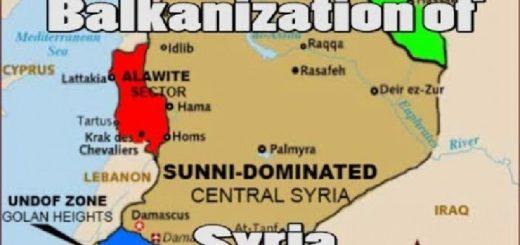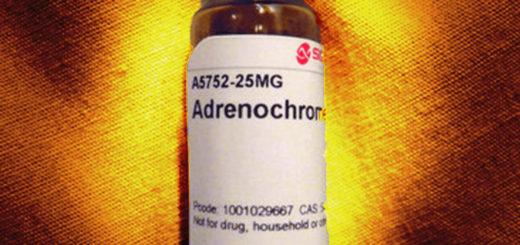We Need A President Who Will Make Peace With Russia; Putin Wants Peace
The War and Economics: President Putin at St Petersburg Forum

If Russian families need automobiles, then Russia will have to produce enough cars for them at prices they can afford. If there is illness in Russia, then Russia will have to produce the needed medicines and medical equipment at affordable prices.
This revolutionary concept of economics—revolutionary compared to the mumbo-jumbo taught and practiced in the US today—was at the heart of Russian President Putin’s keynote address to last week’s St Petersburg International Economic Forum (SPIEF).
For 25 years, the annual St Petersburg International Economic Forum has been the most important meeting-place for Russian and worldwide business—joined by Russian federal and provincial officials. The organizers said that last week’s June 14-17 event brought 17,000 participants (who paid $25,000 per head) from 130 countries—despite the sanctions. They report that more than 900 deals were signed, totalling $46 billion.
These forums have hosted discussions of Russia’s development goals with foreign guests, and discussions within multinational development groups such as the BRICS (Brazil, Russia, India and China), the Shanghai Cooperation Organization (SCO), and the Eurasian Economic Union (EAEU). But most of the sessions were actually discussions, among Russians, of pressing Russian economic, social, educational and cultural issues, with the participation of foreign guests. This was the context for Putin’s keynote address cited above.
President Putin mentioned automobiles and medicines to illustrate his policy of fighting inflation by increasing supply. This is the opposite of the failing Biden program, but it is what President Trump has called for in his “Agenda 47” proposals.
Otherwise, the Russian President pointed to Russia’s unemployment rate—the lowest in history at 2.9%. He coupled it with the world demographic crisis, in which natural population growth is trending downward, not only in Russia, but in virtually every country outside of Africa. The resulting labor shortages have forced months-long shutdowns of Russian factories. Putin proposes to reverse these shortages through automation and industrial robots on the one hand—but more generally by raising the professional and technical level of labor. He advocates vast increases in technical and vocational education for instance. And unlike our “country club” Republicans in the US, Putin knows that increased labor productivity requires higher wages.
For this reason, although the minimum wage was increased 6.3% on January 1, 2023, which did not compensate for inflation—yet it will increase 18.5% for 2024. This is far above both inflation and the average growth of wages, directly benefitting five million workers.
As part of this process, Russia has been replacing foreign technologies cut off by the sanctions, under a program called “Technological Sovereignty.” For comparison, Putin cited the revolution in Russian agriculture since 2014. Back then, in retaliation for an earlier round of European Union (EU) sanctions, Russia closed its markets to farm imports from the EU, and encouraged Russian farmers to fill and overfulfill the gap. This encouragement included price supports, cheap credit, transportation and storage logistics, and help in entering foreign markets. Russian agriculture blossomed. Now Russia fills all its needs for products like tomatoes which were never grown there before. Russia has been among the top five grain exporters for the last ten years, and the largest supplier of wheat to the global market since 2016.
The “Technological Sovereignty” program aims to do for Russian high-technology industry, what was done for agriculture after 2014. Investment, cheap credits and technology are among the means used.
All this in the midst of a war. But the economic effects of this war are very different between Russia and the US. Russia has continually cranked up production to match and outmatch its consumption of munitions and weapons—whatever you may have heard to the contrary. (All the lying by our fake news that Russia was running out of missiles, for example, has been quickly disproven by events.) The resulting high capital turnover in high-technology industries, proliferates technological progress and higher productivity into the economy generally. This works to push down the rate of inflation, even while military expenditures are pushing it up.
Not so in our country. Our own Military-Industrial Complex is not so fast on its feet—it rather resembles a Gila monster. It will be years before our MIC is able to gear up weapons production to the levels that Ukraine is consuming right now. But Raytheon, for example, is doing very well in its own terms, and its stock is soaring. It has received $2 billion against future orders of weapons which are being used up today–orders which Raytheon will be unable to fill until long after this war is over. And Raytheon expects another $3 billion more this year for the same thing. Good news for our retiring generals and our Congressmen’s reelection war-chests!
The “American System”
None of this is meant to imply that Russia’s policies are ideal, or a model for the US. The American System of Political Economy, invented by Franklin and Hamilton, pursued by Lincoln, refined by Lyndon LaRouche, and endorsed by President Trump, goes far beyond anything that exists in Russia. Rather than a National Bank, like Hamilton’s, to issue credit for real production, Russia has an “independent central bank” like our Federal Reserve, which holds its credit in an iron grip. Further, Russia officially endorses the fraud of man-made global warming, and the suicidal nonsense of wind and solar power, and Laputan “carbon capture and storage.” Personally, President Putin knows this is all humbug, but he chooses to remain quiet. Of all world leaders, only President Trump has shown the courage to refute the genocidal “climate” lie.
But in any case, the sanctions have failed totally. Russia has come out of recession this year with a rising GDP, while the European Union has fallen into recession, led by its economic powerhouse Germany. Russian unemployment is lower than in many European Union (EU) countries, and inflation is falling in Russia, crossing over EU inflation which is rising.
Chalk it up to another abject failure of Biden policy. The Biden administration was planning out “killer sanctions” against Russia from the moment it came to office, a year before the Ukraine war. Now those sanctions have gone the way of his Afghanistan withdrawal. Meanwhile, the dramatic failure of the current Ukrainian offensive is exploding the year-long lie that Ukraine was winning the war—Afghanistan again! It seems everything we knew was wrong!
We cannot competently sum up the status of the Ukraine war here—for that we refer readers to Col. Douglas Macgregor. But there are two lies which are so pernicious that we feel we have to refute them before concluding.
First lie: Putin has threatened tactical nuclear strikes in Ukraine. This has been stated repeatedly in our fake news for many months or longer. In every such article, I have followed the links provided, and none of them ever substantiated this lie. None of them could. As Putin just said in St Petersburg, Russian nuclear doctrine provides for “first use” only after a massive nuclear launch against Russia, or when the existence of the state is threatened. And neither could occur in Ukraine—as he also said.
Other Russians may have spoken about it, but so what? Every country has its idiots and lunatics.
Second Lie: Putin refuses to negotiate. On the contrary, he has stressed repeatedly that “Russia has never closed that door” to negotiation. He had reached a tentative settlement with Ukraine in March, 2022, only to have it blown up by Boris Johnson. Where so much is at stake, one would hope that citizens would at least get their facts straight.
















